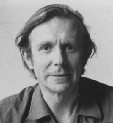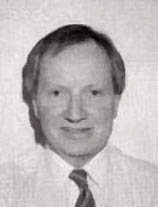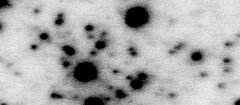A new method for getting a clear astronomical view of the night sky has been developed by UK astronomers. The technique cancels out the blurring effects of the Earth’s atmosphere and could allow astronomers to obtain Hubble-quality images without the need for reliance on an expensive space-based telescope.
Craig Mackay and his colleagues at the University of Cambridge have developed their technique using a charge-coupled device detector built by E2V Technologies of Chelmsford, a sophisticated relative of the image chip found in digital cameras and camera phones. However, their CCD can take high-resolution pictures of the night sky one frame after another at high speed. A computer program developed by Mackay’s team then picks out only those images with the least noise and adds them together to cancel out any readout noise. At the same time, image distortion caused by the atmosphere is also cancelled out in the process.

John Baldwin
Mackay and his team in the Institute of Astronomy and John Baldwin of the Cavendish Laboratory worked together with the aim of allowing astronomers to map the Universe’s dark matter. Cosmologists believe dark matter accounts for 90 percent of the mass of the Universe but remains an enigma because it is invisible to conventional telescopes. Its existence is only inferred on the basis of the expansion of the Universe as measured using the red-shifts of bright objects in the cosmos such as stars, galaxies and quasars as they race away from Earth.
Understanding the distribution of dark matter properly will, however, provide scientists with a better understanding of how the Universe evolved from the Big Bang and perhaps tell us how it will evolve in the distant future. It could answer one of the biggest questions facing cosmologists – will the Universe expand forever, or will it ultimately end in a Big Crunch as gravity causes it to collapse into a singularity.

Craig Mackay
This new camera and the image selection method we call ‘Lucky Imaging’ will revolutionise astronomical image quality obtainable from the ground, says Mackay. There are currently many observing programmes that need to cover wide areas of the sky, something the Hubble Space Telescope cannot do. This method will now allow wide field imaging with a level of quality only achievable with the Hubble Space Telescope, he adds.
Animated Lucky (Original images Courtesy of AST/Cambridge)
The Cambridge technique will allow astronomers to measure how images of distant galaxies are distorted by invisible dark matter. This is the first time we may have a technique that will allow the tracing of dark matter throughout the Universe to be tackled properly, says Mackay.

Still frame from animated Lucky (Original images Courtesy of AST/Cambridge)
The method will give us much more accurate information and allow us to work on much fainter galaxies then we can at present from ground, Mackay told Spotlight. By looking at the change in scale of the dark matter we can work out how these mass distributions are evolving in time. The researchers do this by looking at the way that distant galaxies are distorted in comparison with the way that closer galaxies are affected. The distortions of the most distant galaxies are caused by all the dark matter fluctuations as the light travels across the Universe whereas the distortions of the near galaxies are only caused by the distortions of closer dark matter structures. Provided we have enough information of good enough quality then we should be able to work out the way in which these dark matter structures change, if indeed they do change, with red-shift, adds Mackay.
The team is already planning to improve on the technique to image the sky more quickly and efficiently. The current CCD cannot cover a larger part of the sky. If we are to cover reasonably large areas of sky we need to use an array of these detectors, Mackay revealed to us. It is simply by having large numbers (perhaps an array of 100, all working in parallel, each with their own moments of Lucky imaging quality) that the proposed instrument is more powerful.
Further reading
Professor John Baldwin
http://www.mrao.cam.ac.uk/people/jbaldwin.html
Lucky Imaging website
http://www.ast.cam.ac.uk/~optics/Lucky_Web_Site/index.htm
Suggested searches
dark matter
redshift